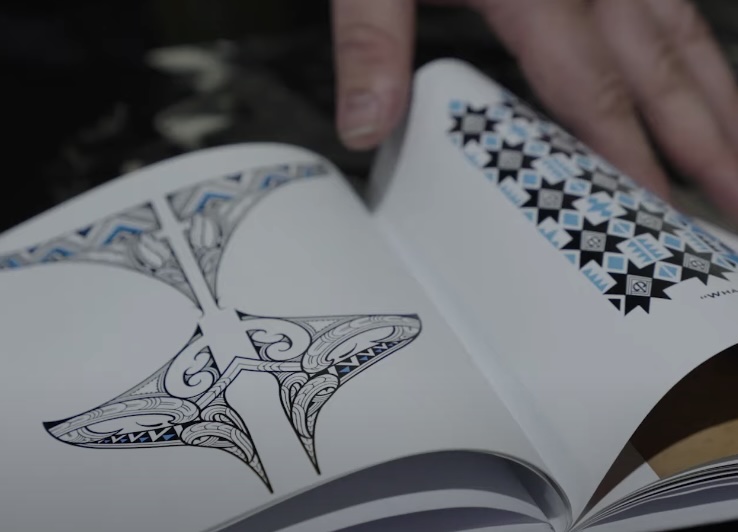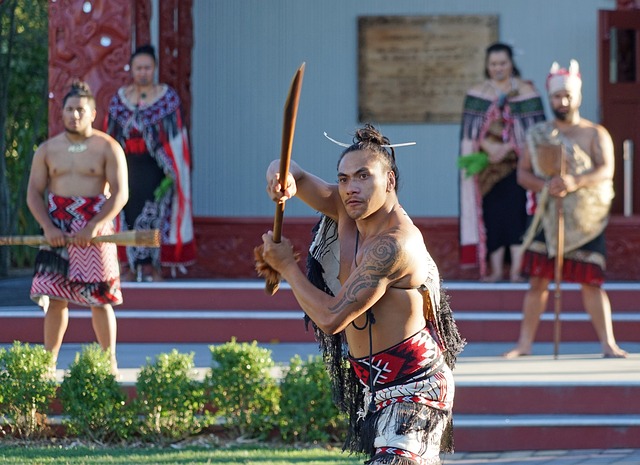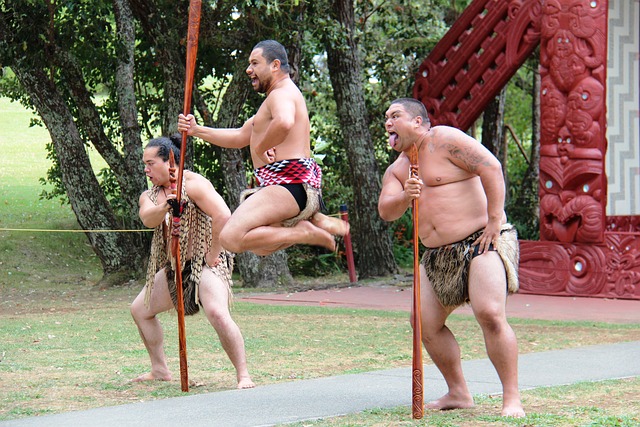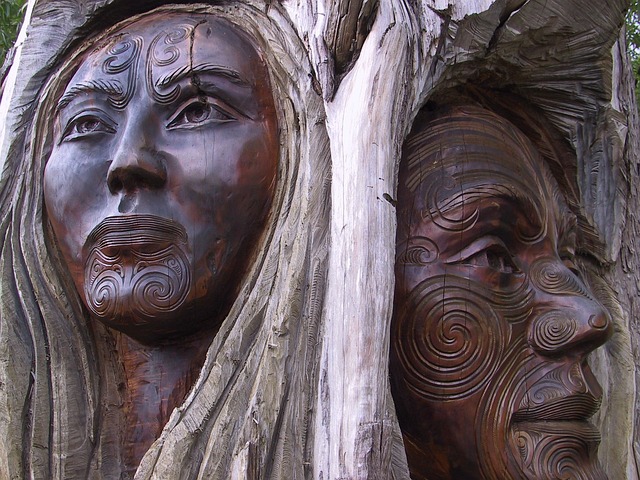The Maori people, indigenous to New Zealand, possess a rich cultural heritage that is vividly expressed through their traditional art forms. Among these, Maori patterns hold a special place. These patterns are not merely decorative but carry deep symbolic meanings, reflecting the Maori’s connection to their ancestry and the natural world. This article explores the significance behind various Maori patterns and meanings, highlighting their importance in Maori culture.
The Language of Maori Patterns
Maori patterns, rich in symbolism and cultural significance, are integral to the traditional art forms of the indigenous Maori people of New Zealand. These patterns, often found in various forms of art, adornments, and even tattoos, carry deep meanings that reflect the values, beliefs, and experiences of the Maori community. Here, we explore four prominent Maori patterns:
Koru (Spiral)
| Aspect | Description |
| Symbolism | The Koru embodies themes of new life, growth, strength, and peace. |
| Appearance | Resembling a spiraling fern frond, the Koru symbolizes the unfolding of new life or beginnings, conveying hope and rejuvenation. |
The Koru’s significance stems from its association with nature and the cyclical patterns of growth and renewal. Its elegant spiral shape represents the journey of life, from conception to maturity, and reflects the interconnectedness of all living things. The symbolism of the Koru extends beyond individual growth to encompass broader themes of harmony and balance within the natural world.
Hei Matau (Fish Hook)
| Aspect | Description |
| Symbolism | The Hei Matau signifies prosperity, abundance, and good health. |
| Appearance | Resembling the shape of a fish hook, this pattern symbolizes the Maori’s deep connection to the sea, essential for travel, fishing, and sustenance. |
The Hei Matau holds immense cultural significance for the Maori people, who traditionally relied on fishing for their livelihoods. As a symbol of abundance and good fortune, it represents not only material prosperity but also spiritual well-being. The intricate designs often incorporated into Hei Matau reflect the Maori’s reverence for the ocean and their respect for the natural world.
Pikorua (Twist)
| Aspect | Description |
| Symbolism | The Pikorua embodies concepts of eternity, friendship, and loyalty. |
| Appearance | Depicting the path of life and eternity with its twists and turns, this pattern symbolizes enduring bonds among people. |
The Pikorua’s intertwined design represents the eternal nature of relationships and the interconnectedness of individuals within communities. Its lack of a distinct start or end signifies the continuity of friendship and loyalty across time and space. As a symbol of unity and interconnectedness, the Pikorua holds significant cultural value for the Maori people, emphasizing the importance of relationships and mutual support.
Manaia (Spiritual Guardian)
| Aspect | Description |
| Symbolism | The Manaia represents protection, guidance, and balance. |
| Appearance | Often depicted as a bird-like figure with the head of a bird, body of a man, and tail of a fish, symbolizing the balance between sky, earth, and water. |
The Manaia serves as a spiritual guardian, watching over individuals and communities and offering protection from harm. Its hybrid form reflects the interconnectedness of the spiritual and physical worlds, bridging the gap between the heavens, the earth, and the sea. As a symbol of balance and harmony, the Manaia embodies the Maori belief in the interconnectedness of all living things and the importance of maintaining equilibrium within the natural order.
Maori Patterns in Contemporary Design
Maori patterns have emerged as a dynamic force, weaving through various creative disciplines to infuse a sense of cultural richness and depth into modern aesthetics.
Significance of Maori Patterns
In contemporary design, Maori patterns, known as “kowhaiwhai” in Maori culture, hold immense cultural and spiritual significance. These patterns are not merely decorative; they are deeply rooted in the traditions, beliefs, and values of the Maori people, serving as tangible expressions of their connection to the natural world, ancestral lineage, and spiritual cosmos. Understanding the profound meanings behind Maori patterns is essential for appreciating their role in contemporary design.
- Symbolism: Each Maori pattern carries layers of symbolism, reflecting core Maori values such as unity, strength, and respect for the environment. For example, the koru, a spiral motif representing new life, growth, and renewal, symbolizes the interconnectedness of all living beings and the cyclical nature of existence.
- Cultural Identity: Maori patterns serve as potent symbols of cultural identity and resilience, anchoring Maori communities in their rich heritage and fostering a sense of belonging among individuals of Maori descent. By incorporating these patterns into contemporary design, Maori artists and designers assert their cultural presence and assert the enduring relevance of indigenous knowledge and creativity.
- Spiritual Significance: Many Maori patterns hold profound spiritual significance, reflecting Maori cosmology and belief systems. These patterns often incorporate elements inspired by nature, such as the waves of the ocean, the leaves of the fern, or the wings of birds, symbolizing the interconnectedness of all living things and the spiritual essence that permeates the natural world.
Applications in Contemporary Design:
Maori patterns have permeated various spheres of contemporary design, enriching diverse creative disciplines with their aesthetic allure and cultural resonance.
- Fashion: In the realm of fashion, Maori patterns adorn clothing, footwear, and accessories, infusing modern attire with a distinctively Maori aesthetic. From bold prints on garments to intricate designs on accessories, these patterns offer a visually striking expression of Maori identity and cultural pride.
- Jewelry: Maori-inspired jewelry pieces feature intricately carved motifs such as the koru, tāniko (geometric patterns), or manaia (guardian spirits), serving as wearable symbols of Maori heritage and spiritual connection. These pieces not only adorn the body but also carry layers of cultural significance, inviting wearers to embrace their Maori identity with pride.
- Home Decor: Maori patterns adorn an array of home decor items, including textiles, ceramics, and wall art, transforming living spaces into vibrant reflections of Maori culture. Whether woven into rugs and cushions, etched onto pottery and vases, or painted onto canvas and walls, these patterns infuse homes with a sense of warmth, authenticity, and cultural depth.
Impact on Cultural Preservation
The integration of Maori patterns into contemporary design has profound implications for the preservation and revitalization of Maori culture, both locally and globally.
- Cultural Visibility: Maori-inspired products increase the visibility of Maori culture on the global stage, inviting people from diverse backgrounds to engage with and appreciate Maori artistry, craftsmanship, and cultural traditions. Through exhibitions, fashion shows, and online platforms, Maori designers and artists showcase their creativity and cultural heritage to audiences worldwide, fostering cross-cultural understanding and appreciation.
- Economic Opportunities: The commercialization of Maori patterns creates economic opportunities for Maori artists, designers, and artisans, enabling them to sustain their livelihoods while practicing and preserving traditional craftsmanship. By supporting Maori-owned businesses and enterprises, consumers contribute to the economic empowerment and self-determination of Maori communities, strengthening their resilience and autonomy.
- Cultural Revitalization: By incorporating Maori patterns into everyday objects, contemporary designers play a vital role in the revitalization of Maori cultural practices and artistic traditions. Through collaborations with Maori artists and communities, designers explore innovative ways to reinterpret and reimagine traditional patterns, ensuring their relevance and resonance in contemporary contexts. This dynamic exchange between tradition and innovation not only honors the legacy of the past but also propels Maori culture forward into the future, inspiring new generations to embrace and celebrate their cultural heritage with pride and creativity.
Cultural Significance and Preservation
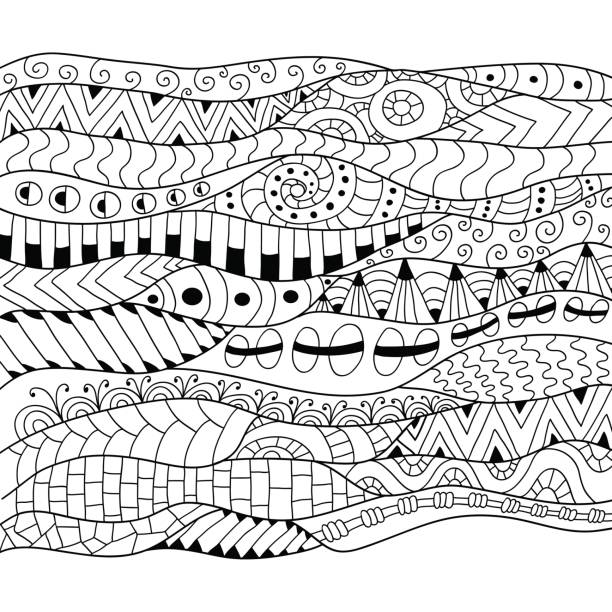
Understanding the meanings behind Maori patterns is essential for both cultural preservation and global respect for indigenous traditions.
Approaching Maori Patterns with Sensitivity
As Maori patterns gain popularity worldwide, it is crucial to approach them with sensitivity and acknowledgment of their origins to avoid cultural appropriation and disrespect.
- Ethical Engagement: Designers, consumers, and businesses must engage with Maori patterns ethically, respecting their cultural context and the communities from which they originate. This includes seeking permission from Maori artists and communities before using Maori patterns in commercial contexts.
- Avoiding Harmful Stereotypes: Cultural appropriation of Maori patterns can perpetuate harmful stereotypes and diminish their cultural significance. It is essential to avoid reducing Maori patterns to mere fashion trends or superficial decorations, recognizing their deeper cultural meanings and significance.
- Respecting Cultural Context: By respecting the cultural context of Maori patterns, individuals and businesses contribute to a broader culture of respect for indigenous traditions worldwide. This involves understanding the historical and cultural significance of Maori patterns and refraining from using them inappropriately or out of context.
Initiatives for Public Education
Initiatives aimed at educating the public about the importance of Maori patterns play a vital role in cultural preservation and respect, raising awareness and promoting understanding among diverse audiences.
- Raising Awareness: Workshops, exhibitions, and educational resources raise awareness about the cultural significance of Maori patterns, their meanings, and their role in Maori identity and heritage. These initiatives provide opportunities for individuals to learn about Maori culture in-depth and engage with Maori patterns in meaningful ways.
- Promoting Understanding: By promoting understanding of Maori culture and patterns, these initiatives encourage respectful engagement and appreciation among diverse communities. They facilitate dialogue and exchange between Maori and non-Maori individuals, fostering mutual respect and understanding.
- Empowering Communities: Initiatives for public education empower Maori communities to share their cultural knowledge and perspectives, reclaiming control over the representation and dissemination of Maori culture. These initiatives prioritize the voices and agency of Maori artists, educators, and community leaders, ensuring that Maori culture is represented authentically and respectfully.
Preserving Maori Cultural Expressions
Efforts towards preserving Maori cultural expressions ensure that these valuable traditions are passed down to future generations and continue to thrive in contemporary society.
- Passing Down Traditions: By preserving Maori cultural expressions, communities ensure that their cultural heritage is passed down to future generations, maintaining a sense of continuity and belonging. This involves teaching traditional art forms, techniques, and cultural practices to younger members of the community.
- Fostering Pride: Preserving Maori cultural expressions fosters a sense of pride and belonging among Maori communities, strengthening cultural resilience and identity. When individuals are encouraged to embrace their cultural heritage, they develop a deeper connection to their roots and contribute to the ongoing vitality of Maori culture.
- Thriving in Contemporary Society: Maori cultural expressions continue to thrive in contemporary society, adapting to changing contexts while maintaining their integrity and significance. From traditional carving and weaving to contemporary art and design, Maori culture remains dynamic and relevant, enriching the cultural landscape of New Zealand and the world.
Global Respect for Indigenous Traditions
Respect for Maori patterns extends beyond local communities to a global audience, contributing to a broader culture of respect for indigenous traditions worldwide.
- Acknowledging Contributions: By acknowledging the cultural significance of Maori patterns and engaging with them ethically, individuals and businesses honor the contributions of indigenous peoples to the richness and diversity of global culture. This recognition fosters mutual respect and appreciation across cultural boundaries.
- Promoting Cross-Cultural Understanding: Respect for Maori patterns promotes cross-cultural understanding and appreciation, fostering connections between diverse communities. When individuals learn about Maori culture and engage with Maori patterns respectfully, they develop empathy and understanding for cultures different from their own, building bridges of solidarity and mutual respect.
- Upholding Cultural Diversity: Global respect for indigenous traditions upholds the richness and diversity of cultures worldwide, promoting a more inclusive and equitable society. By valuing and preserving indigenous cultural expressions, individuals and societies affirm the inherent worth and dignity of all cultures, contributing to a world where diversity is celebrated and cherished.
Conclusion
Maori patterns and meanings offer a fascinating glimpse into the world of Maori culture, reflecting their rich history and spiritual beliefs. These patterns are not just art; they are a language of their own, conveying messages of life, nature, and the spirits. By understanding and respecting these meanings, we can better appreciate the beauty and significance of Maori cultural symbols in a global context.
FAQ
Maori patterns are deeply symbolic and represent various aspects of life, nature, and spirituality. Each pattern has a specific meaning and reflects the Maori’s values and beliefs.
Today, Maori patterns are seen in various forms of art and design. They decorate everything from tattoos and clothing to official logos and artwork, serving as a bridge between traditional Maori culture and modern expressions.
While it is acceptable to appreciate and use Maori patterns, it should be done with respect and understanding of their cultural significance. It’s recommended to learn about the meanings and stories behind these patterns and consider how they are used to avoid cultural appropriation.
Many resources are available for those interested in learning about Maori culture and art. Museums, cultural centers, books, and websites offer detailed insights into the history, significance, and techniques behind Maori patterns.
